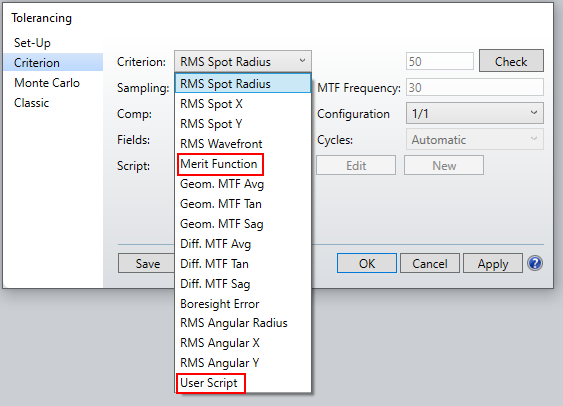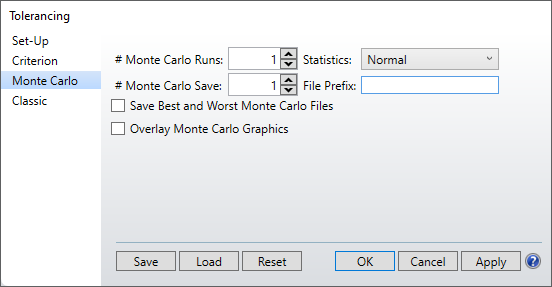Hello,
I want to perform tolerancing analyses for all wavelengths of my system simultaneously, not just the ‘test wavelength’. I understand that I could simply write the wavelength operand TWAV for each wavelength, followed by the list of other operands copied each time, however there are two problems with that: 1. It doesn’t take into account the weighing of different wavelengths. 2. I suppose it artificially increases the deviation of the criterion, namely, it sums the deviations (in the RSS meaning) of different wavelengths rather than averaging them.
Is there any way to tackle this?
Thank you.







